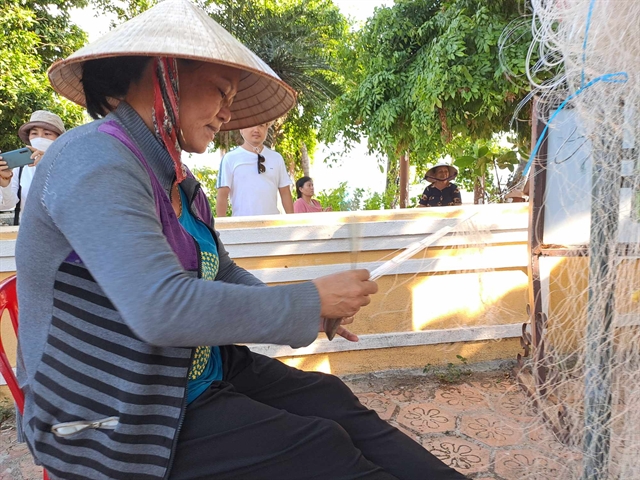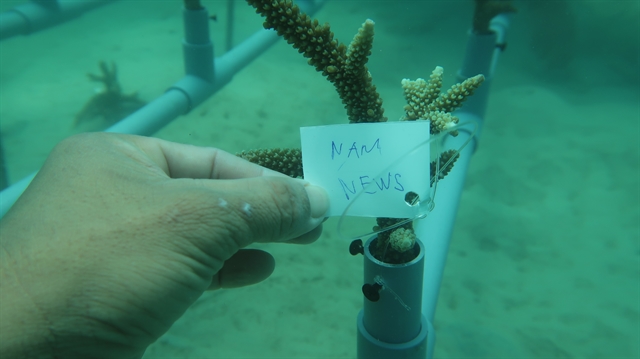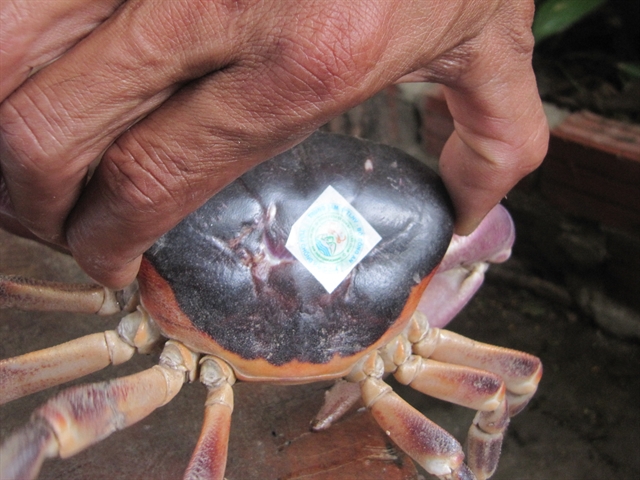 Society
Society

 |
| The Port of Chàm Islands, off the coast of the ancient town of Hội An. The site celebrates its 15th anniversary of becoming a UNESCO World Biosphere Reserve site (2009-24) with successful conservation of nature and culture. — VNS Photo Công Thành |
CHÀM ISLANDS — Having been recognised as a UNESCO World Biosphere Reserve site in 2009, Chàm Islands-Hội An has been boosting the conservation of flora and fauna species on land and water, making it an ideal destination, rich in biodiversity, for green travellers.
The ancient town of Hội An and management board of Chàm Islands Marine Protected Area (MPA) officially celebrated the 15th anniversary of the UNESCO award at a special ceremony.
In improving the overall conservation of biodiversity over land and water, the Chàm Islands Marine Protected Area (MPA) managing board has been promoting the establishment of the Chàm Islands Nature Reserve for extended protection and conservation of natural resources on 23,500ha including 1,490ha of the islands, forest and sea area under MPA management.
 |
| A branch of coral is planted in water off the Chàm Islands. A large area of coral has been restored in the waters off Chàm Islands. Photo courtesy of Chàm Islands MPA |
The World Biosphere Reserve site, which covers the Chàm Islands, 20km off the coast of Hội An, the area of ancient town of Hội An and the lower area of the Thu Bồn River, is seen as a unique area in central Việt Nam in terms of biodiversity research, attracting an average of 400,000 visitors per year.
The Islands – which include seven islets (Lao, Lá, Dài, Tai, Mồ, Khô and Cụ) and the main Chàm Island with 2,400 inhabitants – are the only location in Việt Nam successfully promoting a ban on plastic bags, the policy of ‘3R’ (reduce, reuse and recycle) and preventing over-fishing in Việt Nam.
Visitors and local islanders are warned not to use or bring plastic bags or single-use plastic items into the islands as it builds a future as the first ‘zero waste and non-plastic waste’ destination.
The area of protected coral reefs at seven sites off the islands has now doubled in size, following 15 years of dedicated conservation projects, and now covers around59.16 per cent of the nearby ocean floor, following a coral clean-up programme by the management board of the Chàm Island Maritime Protected Area (MPA).
More than 2,700 groups of coral species had been planted over 2,000sq.m in waters off the Chàm Island with a survival rate ranging between 52 and 99 per cent, the MPA said.
 |
| Trần Thị Hồng Thúy, director of Chàm Islands Marine Protected Area managing board, releases a new born turtle from a turtle conservation on the Islands. Photo courtesy of Thanh Hải |
A report from the Chàm Islands MPA, said the island earns US$3.6 million per year, 65 per cent of which is from tourism service.
Most local income, which is equivalent of per capita to VNĐ42 million ($1,800) comes directly from the well-protected marine ecological system.
The World Biosphere Reserve is also one of three main attractions in Quảng Nam Province – along with the world heritage sites of Hội An ancient town and Mỹ Sơn Sanctuary – with more than 80 per cent of the population having switched from fishing to the eco-tourism sector.
Deputy director of the MPA, Nguyễn Văn Vũ said strict protections and integrated management solutions have been used for conservation of primary forest and sea
“The world reserve site needs a longer strategic plan in expanding biodiversity conservation in the MPA and improving the natural value of the UNESCO-recognised Biosphere Reserve site,” Vũ said.
“Previously, the MPA managing board was only assigned to sea area management, but it should promote the role in protection of ecological systems on land and water for the wider conservation of species.”
The Chàm Islands-Hội An World Biosphere Reserve, which covers over 33,000ha including the ancient town of Hội An, has 1,500ha of tropical forests and 6,700ha of ocean, featuring a wide range of fauna and flora.
 |
| A well-protected natural environment in Chàm Islands features an attractive eco-tour site off the coast of Hội An ancient Town. Photo courtesy of Green Tours |
Director of the MPA Centre Trần Thị Hồng Thúy said booming mass tourism is seen as the biggest challenge to the reserve as it could result in over-exploited natural resources.
One hundred and thirty five speed boats and 600 fishing boats are now registered to the islands, while more than 100 restaurants, shops, seafood agents and home-stay services have been developed on the islands over the past decades.
Fresh water reserves are also a concern as salinisation and over-exploitation in the top tourist season, when a 85,000cu.m reservoir could only be reserved for local residents’ use, MPA reported.
 |
| A fresh water crab is sealed with sustainable brand in Chàm Islands. Local fishermen join sustainable exploitation of the crab for longer development of the ecological system of the islands. VNS Photo Công Thành |
IUCN, WWF and other conservation organisations have been working with the world biosphere site in series of programmes of nature protection and intangible heritage, turtle conservation, sustainable bird-nests, medicinal herbs, OCOP (One commune-One product) and sustainable fishing. VNS